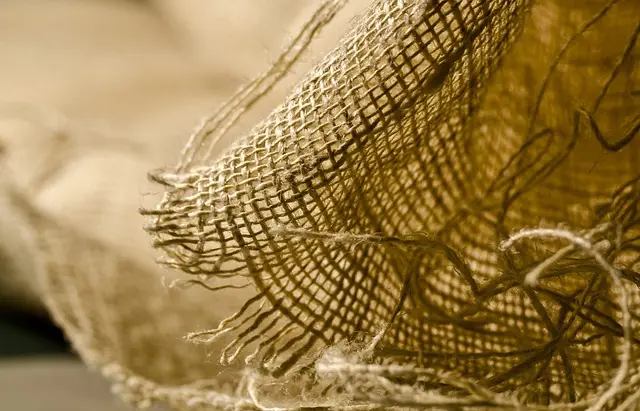Muscle soreness post-exercise, commonly known as DOMS, results from microscopic muscle fiber tears, particularly from eccentric contractions or new physical activities, and is associated with an inflammatory response that both causes pain and aids in healing. Acadia Kratom, derived from the Mitragyna speciosa plant, has gained attention as a potential natural remedy for managing this muscle soreness due to its alkaloids like mitraphylline and 7-hydroxymitragynine, which engage with opioid receptors to provide pain relief. Users often find relief with strains like Bali or Maeng Da, potentially enhancing recovery between workouts. However, it's crucial to approach Acadia Kratom use responsibly, integrating it into a holistic recovery regimen that includes rest and hydration, and under the guidance of a healthcare provider to ensure safety, especially for those with pre-existing health conditions or on other medications.
Acadia Kratom's effectiveness in muscle soreness management is attributed to its alkaloids' pain-relieving and anti-inflammatory properties, which may reduce the need for conventional pain medication and its side effects. For optimal results, users should adhere to recommended dosages and consult with healthcare professionals, especially when dealing with existing health concerns or concurrent medications. It's important to start with a low dose to assess individual sensitivity and avoid negative side effects from overconsumption. Acadia Kratom should be used in conjunction with traditional recovery practices for best outcomes, avoiding combination with other central nervous system depressants like alcohol or sedatives. Regular health monitoring is necessary, and users should cease use and seek medical advice if adverse effects occur. Purchasing from reputable vendors who provide third-party lab test results ensures the safety and efficacy of Acadia Kratom for muscle recovery purposes.
Muscle soreness can be a persistent companion for many, particularly those engaging in rigorous physical activity or exercise. Whether due to intense workouts, heavy lifting, or even everyday activities, the discomfort can impede recovery and progress. Enter Acadia Kratom, a natural supplement gaining attention for its potential role in muscle soreness relief. This article delves into the science of muscle soreness, explores how Acadia Kratom may alleviate such pain, and outlines effective strategies to enhance recovery. Additionally, we will address safety considerations to ensure responsible use of this supplement. Join us as we navigate the intersection of natural well-being and physical performance, with a focus on leveraging Acadia Kratom for muscle relief.
- Understanding Muscle Soreness and the Role of Acadia Kratom in Relief
- Effective Muscle Soreness Relief Strategies Enhanced by Acadia Kratom
- Safety Considerations and Best Practices When Using Acadia Kratom for Muscle Recovery
Understanding Muscle Soreness and the Role of Acadia Kratom in Relief

Muscle soreness, a common occurrence after intense physical activity or exercise, can range from mild discomfort to severe pain that hinders daily functions. This phenomenon, often termed delayed onset muscle soreness (DOMS), is typically a result of microscopic tears in the muscle fibers caused by eccentric contractions or unfamiliar activities. The body’s natural response to this stress involves inflammation, which is both a cause and a part of the healing process. Understanding the underlying mechanisms of muscle soreness is crucial for developing effective relief strategies.
Acadia Kratom, derived from the leaves of Mitragyna speciosa, has garnered attention for its potential role in alleviating muscle pain. Traditionally used in Southeast Asian cultures for its various health benefits, Acadia Kratom contains a blend of alkaloids, including mitraphylline and 7-hydroxymitragynine, which are believed to interact with the body’s opioid receptors. This interaction can lead to analgesic effects that may help in managing muscle soreness. Users often report that Acadia Kratom, particularly strains like Bali or Maeng Da, can provide relief from muscle discomfort, allowing for more comfortable recovery between workouts. It is important to note that while Acadia Kratom may offer relief, it should be used responsibly and in conjunction with proper rest and hydration as part of a comprehensive recovery regimen. Additionally, consulting with a healthcare provider before incorporating Acadia Kratom into your wellness routine is recommended to ensure safety and efficacy, especially if you have existing health conditions or are taking other medications.
Effective Muscle Soreness Relief Strategies Enhanced by Acadia Kratom

Muscle soreness can be a significant hindrance to both athletic performance and daily activities. When exercise-induced muscle pain strikes, effective relief strategies are crucial for maintaining progress and comfort. Acadia Kratom emerges as a potentially valuable aid in managing post-exercise muscle soreness. The alkaloids found within Acadia Kratom, such as mitragynine and 7-hydroxymitragynine, are known to interact with the body’s opioid receptors, which can help alleviate pain without the side effects commonly associated with pharmaceutical analgesics. Users often report a noticeable reduction in discomfort levels, allowing for quicker recovery and continued training or activity. Additionally, Acadia Kratom’s anti-inflammatory properties may contribute to its effectiveness in muscle soreness relief. It’s important for individuals to follow recommended dosages and consult with healthcare professionals when incorporating Acadia Kratom into their wellness routine, especially if they have pre-existing health conditions or are taking other medications. When combined with proper rest, hydration, and nutrition, Acadia Kratom can be a complementary strategy in managing muscle soreness, facilitating a more efficient recovery process for those engaging in physical activities.
Safety Considerations and Best Practices When Using Acadia Kratom for Muscle Recovery

When incorporating Acadia Kratom into your muscle recovery regimen, it’s crucial to prioritize safety and adhere to best practices. Acadia Kratom, like any supplement, should be used responsibly due to its potent alkaloids, such as mitragynine and 7-hydroxymitragynine. Users are advised to start with a low dose to gauge their individual sensitivity and avoid excessive consumption, which can lead to adverse effects. Proper dosing is key; the standard recommended range for Acadia Kratom is between 1-6 grams, depending on tolerance and desired effects. It’s also important to consider that individual responses to kratom can vary greatly, so one should always begin with the lowest effective dose and adjust as necessary.
Acadia Kratom’s role in muscle recovery is rooted in its potential to modulate pain signaling and reduce inflammation, which may aid in alleviating muscle soreness. However, users should not rely solely on kratom for pain management or as a substitute for medical advice. Instead, it can be used alongside other conventional recovery methods, such as stretching, adequate hydration, and nutritious dietary practices. Additionally, to ensure safe usage, individuals should avoid combining Acadia Kratom with other central nervous system depressants, including alcohol or sedatives, due to the risk of respiratory depression or over sedation. Regular monitoring of one’s health status is essential, and if any adverse effects are experienced, discontinuation and consultation with a healthcare professional are recommended. Always source Acadia Kratom from reputable vendors who provide third-party lab test results to confirm the purity and potency of their products.
Muscle soreness can be a significant hindrance to maintaining an active lifestyle, but the insights provided in this article demonstrate that Acadia Kratom may offer effective relief strategies. By understanding the mechanisms behind muscle soreness and how Acadia Kratom interacts with the body’s natural response to exertion, individuals can make informed decisions about incorporating it into their recovery regimen. The discussed strategies highlight the potential benefits of Acadia Kratom when combined with conventional relief methods, emphasizing the importance of a holistic approach to muscle care. However, it is crucial to adhere to safety considerations and best practices when using any supplement, including Acadia Kratom, ensuring its responsible use for optimal recovery outcomes. In summary, this article underscores the potential role of Acadia Kratom in alleviating muscle soreness, paving the way for further research and exploration into its therapeutic properties.






